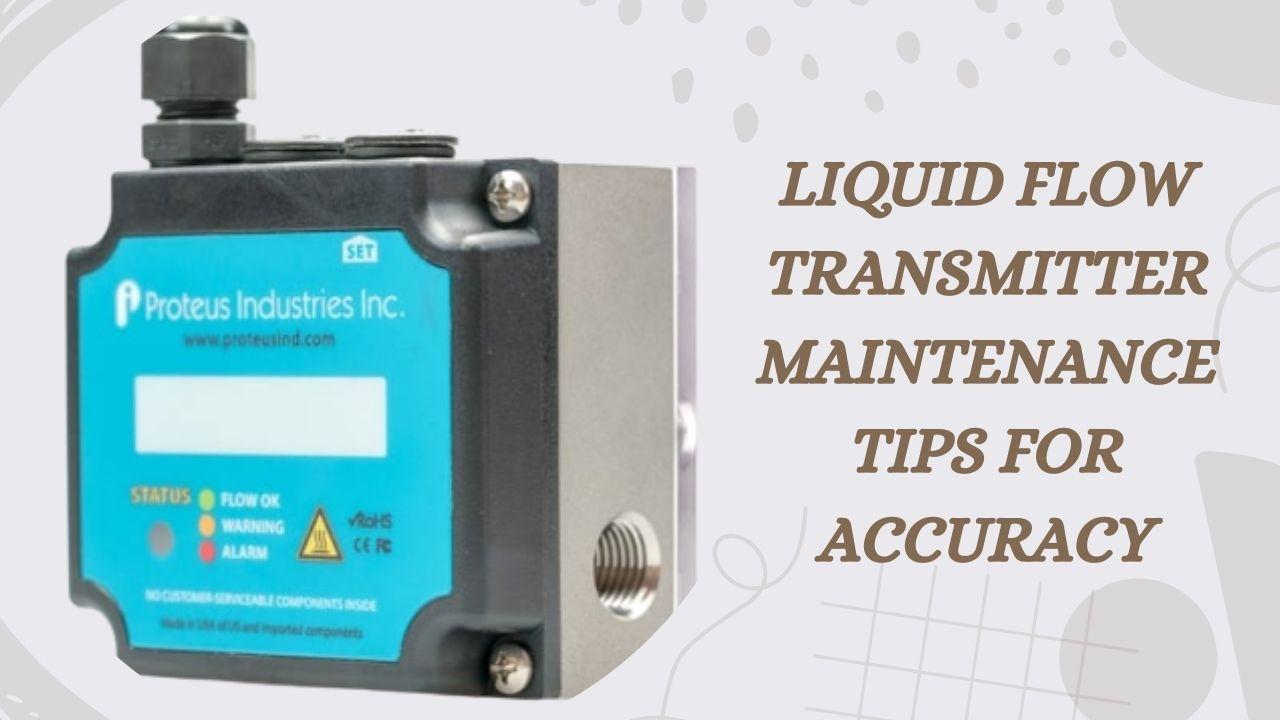Liquid Flow Transmitter Maintenance Tips for Accuracy

A liquid flow transmitter is a device designed to measure and monitor the rate of fluid movement through a pipeline or system, ensuring precise data for industrial, commercial, and water management applications. Accurate flow measurement is crucial for maintaining efficiency, preventing losses, and providing quality control in processes where the liquid volume directly impacts performance and cost. Over time, factors such as wear, debris, or calibration drift can compromise accuracy, resulting in errors or downtime. Regular maintenance not only extends the life of the transmitter but also guarantees reliable performance, operational safety, and optimal efficiency across various applications.
Understanding Liquid Flow Transmitters
A liquid flow transmitter is a device that measures the rate of fluid flow in pipelines and converts it into an electrical signal for monitoring or control. It operates on principles such as differential pressure, electromagnetic induction, or ultrasonic sensing to ensure accurate readings.
Key components needing regular maintenance include the sensor, flow tube, signal converter, and calibration system, as they directly affect measurement precision and reliability.
Industries where precision is critical include oil & gas, chemical processing, water treatment, food & beverage, and pharmaceuticals. In these sectors, accurate flow monitoring ensures safety, quality control, and process efficiency, making liquid flow transmitters indispensable for modern industrial operations.
Common Factors Affecting Accuracy
Buildup of Debris or Contaminants
The accumulation of particles, sludge, or scale within the flow path can obstruct smooth fluid movement, leading to inaccurate readings. Regular cleaning and maintenance help ensure consistent performance.
Sensor Drift and Calibration Issues
Over time, sensors may experience drift due to wear, electrical interference, or ageing components. Periodic calibration is crucial for restoring precision and maintaining reliable measurement data.
Environmental Conditions (Temperature, Pressure, Vibration)
Extreme temperatures, fluctuating pressure, or continuous vibration can impact the transmitter’s sensitivity and measurement stability. Proper installation and protective measures can minimise environmental impacts and enhance accuracy.
Essential Maintenance Tips for Optimal Accuracy
Regular Calibration
Schedule calibration at manufacturer-recommended intervals to maintain measurement precision.
Use certified calibration tools and standardised methods to ensure accuracy.
Cleaning and Inspection
Perform routine cleaning to prevent debris buildup that can obstruct fluid flow.
Inspect for signs of corrosion, wear, or physical damage to avoid inaccurate readings.
Monitoring Performance Trends
Utilise digital monitoring systems to track performance in real time.
Identify unusual patterns early to address potential failures before they escalate and become more severe.
Environmental Protection
Shield transmitters from moisture, dust, and chemical exposure to avoid damage.
Apply proper housing and insulation for harsh operating conditions.
Best Practices for Long-Term Reliability
-
Establish Regular Maintenance Schedules
-
Consistent inspection and servicing of a liquid flow transmitter helps prevent performance degradation and unexpected downtime. A routine maintenance plan should include sensor calibration, leak detection, and cleaning of internal components to ensure accurate readings over time.
-
Use Detailed Maintenance Checklists
-
Having a structured checklist ensures no step is overlooked during servicing. This includes verifying electrical connections, monitoring pressure levels, and ensuring that the flow path is free from obstructions or sediment buildup.
-
Train Personnel for Proper Handling
-
Incorrect handling can lead to damage or inaccurate data. Training staff on correct installation, calibration, and cleaning techniques helps maintain the transmitter’s integrity and operational life.
-
Maintain Accurate Logs for Performance Tracking
-
Recording maintenance activities and operational performance allows early detection of trends that may indicate potential issues. This proactive approach reduces costly repairs and extends the equipment's lifespan.
Conclusion
Regular maintenance of a liquid flow transmitter is essential to ensure reliable performance, accurate measurements, and a longer operational lifespan. Key practices include routine inspections to check for wear or damage, cleaning to remove debris or buildup, and verifying connections to prevent signal interruptions. Calibration at recommended intervals is equally important, as it corrects any drift in measurement accuracy over time.
To maximise both lifespan and accuracy, it’s crucial to follow manufacturer guidelines, use high-quality compatible components, and document each maintenance procedure for future reference. Proactive care not only minimises costly downtime but also enhances overall system efficiency and safety in fluid measurement processes.
:-For best results, consider professional calibration and servicing by experienced technicians who understand the intricacies of flow measurement equipment. Expert attention ensures your transmitter consistently delivers precise readings while remaining in optimal condition. Consult our specialists today to schedule professional calibration services and keep your liquid flow transmitter performing at its best.





